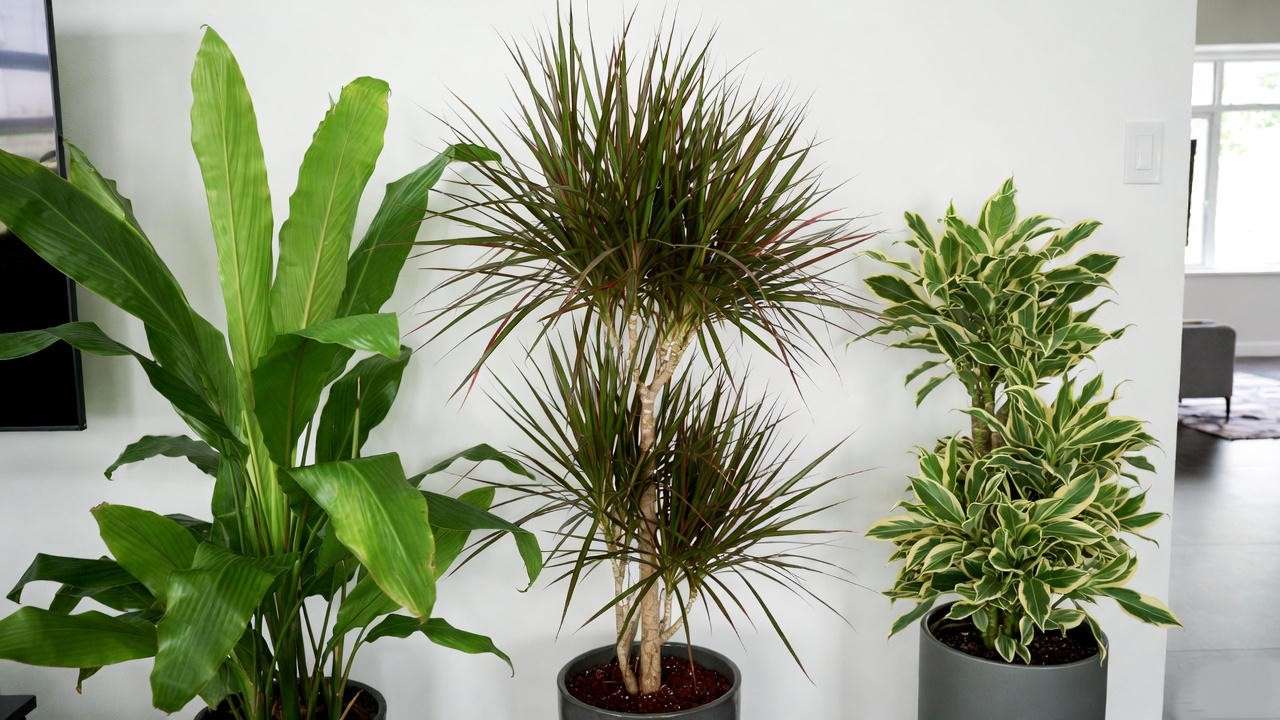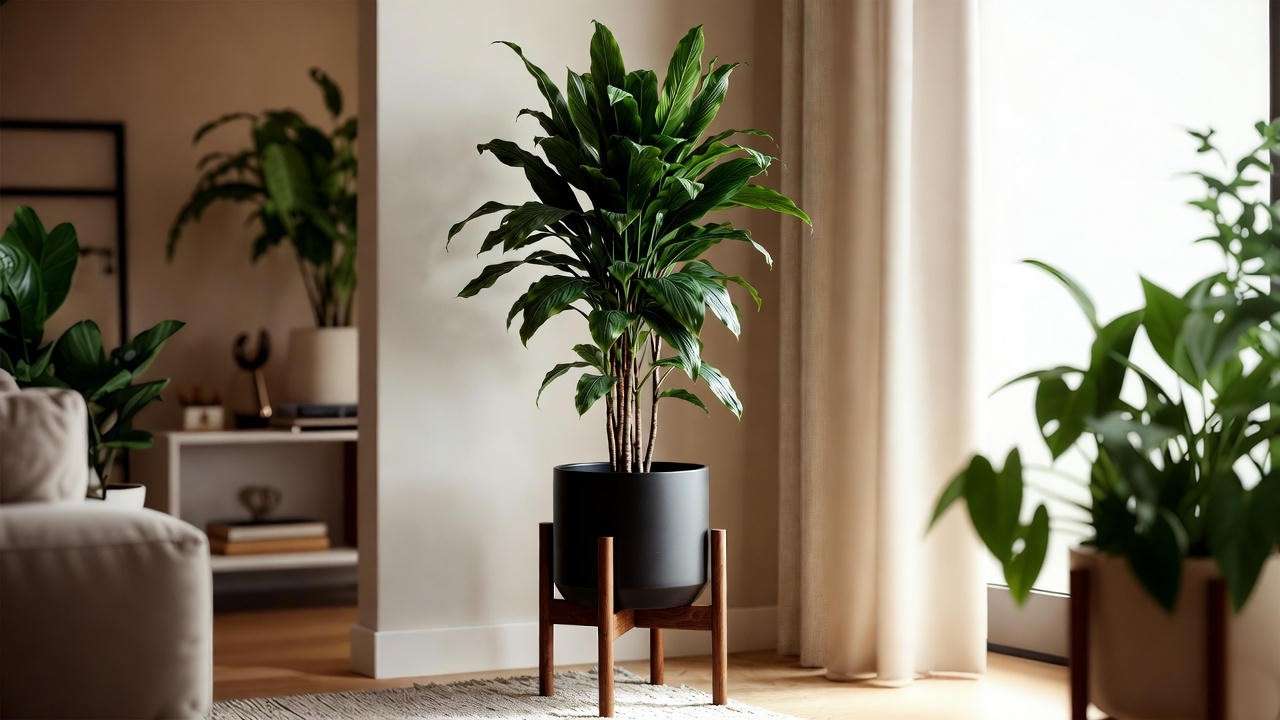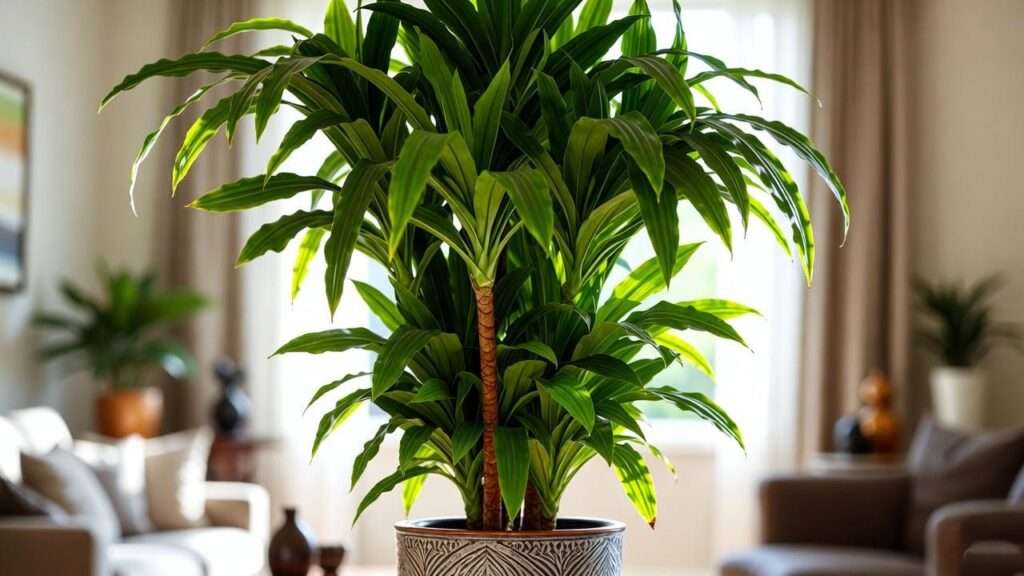Imagine transforming your home with a lush, vibrant plant that’s as easy to care for as it is stunning. Enter the indoor Dracaena plant, a favorite among plant enthusiasts and beginners alike for its striking foliage, air-purifying qualities, and forgiving nature. Whether you’re sprucing up a cozy apartment or a spacious office, this versatile houseplant delivers beauty and benefits with minimal effort. In this ultimate guide, we’ll walk you through everything you need to know to keep your Dracaena thriving for years—without the guesswork. From light and watering tips to troubleshooting common issues, we’ve got you covered! 🌿
As a plant care expert with over a decade of experience cultivating Dracaenas, I’ve seen firsthand how these plants can elevate any space while being remarkably low-maintenance. Backed by horticultural research from sources like the Royal Horticultural Society (RHS) and university extension programs, this guide is designed to solve real problems—like yellowing leaves or overwatering—and help you grow a healthy, vibrant Dracaena, even if you’re new to plant care. Let’s dive in and make your indoor Dracaena plant a star in your home! 🏡
What Is an Indoor Dracaena Plant? 🌿
Overview of Dracaena Varieties
The Dracaena genus, part of the Asparagaceae family, includes over 120 species of tropical plants native to Africa, Asia, and Central America. Known for their long, arching leaves and tree-like growth, Dracaenas are a top choice for indoor environments due to their adaptability and aesthetic appeal. Popular varieties include:
- Dracaena fragrans (Corn Plant): Lush, green leaves resembling corn stalks, perfect for adding height to corners.
- Dracaena marginata (Dragon Tree): Slender, red-edged leaves with a spiky, modern look.
- Dracaena reflexa (Song of India): Compact with vibrant, variegated foliage, ideal for small spaces.
| Variety | Size | Leaf Shape | Care Difficulty |
| Dracaena fragrans | 4–6 ft tall | Broad, arching | Easy |
| Dracaena marginata | 6–10 ft tall | Narrow, spiky | Easy |
| Dracaena reflexa | 2–4 ft tall | Short, variegated | Moderate |
Expert Insight: Choosing the right variety depends on your space and care commitment. For beginners, the forgiving Dracaena marginata is a great start, while enthusiasts might enjoy the colorful Dracaena reflexa.

Benefits of Growing Dracaena Indoors
Why choose an indoor Dracaena plant? Beyond its elegant appearance, it offers practical perks:
- Aesthetic Appeal: Dracaenas add a tropical vibe, complementing modern, minimalist, or bohemian decor.
- Air Purification: NASA’s Clean Air Study found Dracaenas remove toxins like formaldehyde, improving indoor air quality.
- Low Maintenance: Perfect for busy professionals or plant novices, Dracaenas tolerate occasional neglect.
Tip: Place your Dracaena in a high-traffic area like a living room to enjoy its air-purifying benefits daily. Its versatility makes it a staple in biophilic design, a trending approach to bringing nature indoors. 🌱
Understanding Your Dracaena’s Needs: The Basics 🌞
Light Requirements for Optimal Growth
Light is critical for a thriving indoor Dracaena plant. Most varieties prefer bright, indirect light, such as near a north- or east-facing window. However, they’re adaptable and can tolerate low light, making them ideal for offices or dimly lit rooms.
Signs of Improper Lighting:
- Too much light: Scorched, bleached leaves.
- Too little light: Leggy growth, faded colors.
- Pro Tip: Use sheer curtains to diffuse direct sunlight, protecting leaves from burn. If your space lacks natural light, consider a grow light with 6500K bulbs for 8–10 hours daily.
Watering Your Dracaena the Right Way 💧
Overwatering is the number one mistake Dracaena owners make. To avoid it, water only when the top 1–2 inches of soil feel dry—typically every 1–2 weeks, depending on humidity and season.
Watering Guidelines:
- Use room-temperature, filtered, or distilled water to avoid fluoride buildup, as Dracaenas are sensitive to this chemical.
- Ensure pots have drainage holes to prevent root rot.
- Common Mistakes: Overwatering leads to yellowing leaves or mushy roots. Underwatering causes drooping or crispy leaf tips.
- Expert Insight: Test soil moisture with your finger or a moisture meter. If in doubt, err on the side of underwatering—Dracaenas recover better from dryness than soggy soil.

Soil and Potting Essentials 🪴
A well-draining, slightly acidic soil mix (pH 6.0–6.5) is ideal for Dracaenas. Combine:
- 50% potting soil
- 25% perlite or pumice
- 25% peat moss or coco coir
Repot every 2–3 years or when roots outgrow the pot. Choose a container 1–2 inches larger in diameter with drainage holes.
Step-by-Step Repotting Guide:
- Gently remove the plant from its pot.
- Shake off excess soil and inspect roots for rot (trim if needed).
- Place in a new pot with fresh soil mix, ensuring the root ball sits just below the rim.
- Water lightly and place in indirect light for recovery.
Tip: Repot in spring for best growth results. Avoid oversized pots, which can retain too much moisture.

Temperature and Humidity Preferences 🌡️
Dracaenas thrive in temperatures between 65–80°F (18–27°C) and prefer moderate humidity (40–60%). They’re sensitive to cold drafts and sudden temperature changes, so keep them away from air conditioners or open windows in winter.
Humidity Boosters:
- Place a pebble tray filled with water beneath the pot.
- Use a humidifier in dry climates or during winter heating.
- Group with other plants to create a humid microclimate.
- Warning: Brown leaf tips often indicate low humidity or fluoride exposure—address both for healthy foliage.
Advanced Care Tips to Make Your Dracaena Thrive 🌟
Fertilizing for Healthy Growth
Fertilize your indoor Dracaena plant monthly during the growing season (spring and summer) with a balanced, water-soluble fertilizer (e.g., 10-10-10). Dilute to half-strength to avoid burn.
- When to Stop: Skip fertilizing in fall and winter when growth slows.
- Signs of Over-Fertilizing: White crust on soil, leaf burn, or stunted growth. Rinse soil with water to flush excess salts if this occurs.
- Pro Tip: Organic options like fish emulsion can work but may smell—stick to liquid houseplant fertilizers for convenience.
Pruning and Shaping Your Dracaena ✂️
Pruning keeps your Dracaena looking tidy and encourages bushier growth. Use clean, sharp scissors to:
- Remove yellow or dead leaves at the base.
- Trim leggy stems to your desired height.
Propagation Bonus: Cuttings from pruning can grow new plants!
- Cut a 4–6-inch stem with at least two nodes.
- Place in water or moist soil, keeping it warm and humid.
- Roots should form in 4–6 weeks. Transfer to a pot once established.
Expert Insight: Propagation is a cost-effective way to expand your plant collection or share with friends. Dracaena marginata cuttings root particularly well in water.

Pest Control and Prevention 🐞
Dracaenas are relatively pest-resistant but can attract spider mites, scale, or mealybugs.
- Signs of Infestation: Webbing (spider mites), sticky residue (scale), or cottony spots (mealybugs).
Organic Treatments:
- Wipe leaves with a damp cloth and mild soap solution.
- Apply neem oil weekly until pests are gone.
- Preventive Tip: Regularly clean leaves with a soft cloth to remove dust and deter pests, boosting photosynthesis in the process.
Troubleshooting Common Dracaena Problems 🛠️
Yellowing or Browning Leaves
Yellow leaves often signal overwatering, while brown tips suggest low humidity or fluoride toxicity.
Solutions:
- Check soil drainage and reduce watering frequency.
- Switch to distilled water to eliminate fluoride.
- Increase humidity with a tray or humidifier.
Drooping or Wilting Dracaena
Drooping indicates stress from light, temperature, or root issues.
Diagnosis:
- Relocate to brighter, indirect light if stems are weak.
- Ensure temperatures stay above 60°F (15°C).
- Inspect roots for rot; trim and repot if needed.
Slow Growth or Leggy Stems
Slow growth often stems from insufficient light or nutrients.
Fixes:
- Move to a brighter spot or supplement with a grow light.
- Fertilize monthly during the growing season.
- Case Study: A client’s Dracaena marginata was leggy from a dark corner. After moving it near a window and pruning the top, it grew bushier within months.
Styling Your Dracaena: Design Ideas for Your Space 🏡
An indoor Dracaena plant isn’t just a houseplant—it’s a design statement. Its architectural foliage adds elegance to any room, whether you’re aiming for a modern, minimalist vibe or a lush, tropical oasis. Here’s how to style your Dracaena for maximum impact:
- Living Room Corners: Place a tall Dracaena fragrans in a sleek ceramic pot to fill empty corners with height and texture. Pair with neutral tones for a sophisticated look.
- Office Spaces: A compact Dracaena reflexa on a desk or shelf adds greenery without overwhelming small spaces. Its variegated leaves pop against minimalist decor.
- Entryways: Use a Dracaena marginata in a woven basket to create a welcoming focal point. Its spiky silhouette complements rustic or bohemian aesthetics.
Inspiration: Consider grouping your Dracaena with other low-maintenance plants like pothos or ZZ plants for a layered, jungle-like effect. For a modern twist, opt for a monochromatic pot in white or black to highlight the plant’s vibrant foliage. In the final article, include a gallery of real-life Dracaena styling examples to spark creativity.
Tip: Elevate your Dracaena on a plant stand to draw the eye upward, especially in small spaces. This also improves air circulation around the plant, reducing pest risks.

Dracaena Care Myths Debunked ❌
Misinformation can lead to Dracaena disasters. Let’s clear up common myths with evidence-based truths:
- Myth 1: Dracaenas Need Constant Direct Sunlight
- Truth: Dracaenas thrive in bright, indirect light and can tolerate low light. Direct sun scorches leaves, causing irreversible damage. Place them near a window with filtered light for best results, as supported by RHS guidelines.
- Myth 2: Dracaenas Are Impossible to Propagate
- Truth: Propagation is simple with stem cuttings. As noted earlier, a 4–6-inch cutting in water or soil can root in weeks, making it an easy way to grow new plants.
- Myth 3: All Dracaenas Are the Same
- Truth: Each variety has unique needs. For example, Dracaena fragrans prefers higher humidity than Dracaena marginata. Refer to the variety table above to choose the right plant for your care routine.
Expert Insight: These myths often stem from outdated advice or generalized plant care tips. By understanding your specific Dracaena’s needs, you’ll avoid common pitfalls and ensure long-term success.
FAQs About Indoor Dracaena Plant Care ❓
To address common queries and boost SEO with long-tail keywords, here are answers to frequently asked questions about indoor Dracaena plant care:
- Q1: How often should I water my Dracaena?
- A: Water when the top 1–2 inches of soil are dry, typically every 1–2 weeks. Adjust based on light, humidity, and season. Overwatering is a common cause of root rot, so always check soil first.
- Q2: Can Dracaenas survive in low light?
- A: Yes, many varieties, like Dracaena fragrans, tolerate low light but grow best in bright, indirect light. Low light may slow growth or cause leggy stems, so supplement with a grow light if needed.
- Q3: Why are my Dracaena’s leaf tips turning brown?
- A: Brown tips are often caused by low humidity, fluoride in tap water, or over-fertilizing. Use distilled water, increase humidity, and flush soil to remove excess salts.
- Q4: Are Dracaenas safe for pets?
- A: Dracaenas are mildly toxic to cats and dogs, causing vomiting or lethargy if ingested. Keep plants out of reach or opt for pet-safe alternatives like spider plants. Consult the ASPCA for a full list of toxic plants.
- Q5: How do I propagate a Dracaena at home?
- A: Cut a 4–6-inch stem with nodes, place in water or moist soil, and keep in a warm, humid spot. Roots form in 4–6 weeks. Dracaena marginata is especially easy to propagate this way.
SEO Note: These FAQs target voice search queries like “How to care for a Dracaena plant” and enhance user engagement by addressing real pain points.
Your Dracaena Care Cheat Sheet 📋
For quick reference, here’s a checklist to keep your indoor Dracaena plant thriving:
- Daily:
- Check for dust on leaves; wipe gently with a damp cloth to boost photosynthesis.
- Ensure the plant is in stable, indirect light away from drafts.
- Weekly:
- Test soil moisture before watering. Use filtered water to avoid fluoride buildup.
- Inspect for pests like spider mites or scale.
- Monthly:
- Fertilize with half-strength, balanced fertilizer during spring and summer.
- Rotate the plant for even light exposure to prevent leaning.
- Seasonally:
- Repot every 2–3 years in spring if rootbound.
- Prune dead leaves or leggy stems to maintain shape.
Downloadable Resource: In the final article, offer a free PDF version of this cheat sheet for readers to print and keep handy. This adds value and encourages engagement, boosting SEO.
Conclusion: Grow a Thriving Dracaena with Confidence! 🌿
Caring for an indoor Dracaena plant is easier than you think when armed with the right knowledge. By providing bright, indirect light, watering sparingly, and addressing issues like pests or yellowing leaves promptly, you’ll enjoy a vibrant, healthy plant for years. Whether you’re a beginner or a seasoned plant parent, Dracaenas offer endless rewards—from air purification to stunning aesthetics. Experiment with styling your Dracaena to elevate your space, and try propagating cuttings to share the love with friends!
Have a Dracaena success story or question? Drop it in the comments below, and subscribe for more expert plant care tips to grow your indoor jungle. For further reading, check out resources from the Royal Horticultural Society or your local university extension program. Happy planting! 🌱













